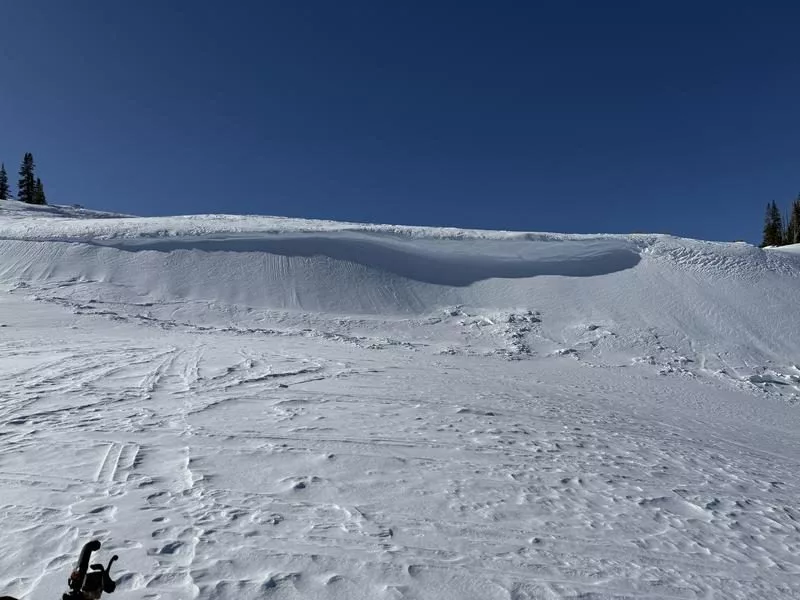
By Aidan Mortensen | KOAL News
As a warm front envelopes the state, conditions in the Manti Skyline continue to pose a persistent avalanche danger in the high to moderate range. To discuss these conditions and what lies ahead this weekend, Castle Country Radio was joined by Brett Kobernik from the Utah Avalanche Center for this weekend’s avalanche forecast.
“Basically, the situation is that we had weak snow form within the snowpack earlier this season, and it’s continued to produce avalanches that breakdown into those deeper weak layers throughout the state, not just on the Manti skyline. And it has been the cause of four fatalities and numerous close calls,” explained Kobernik of the persistent weak layer problem facing the state’s mountain ranges,” what’s happening right now is that we’re starting to see the danger trend decreasing. As the snow pack stabilizes and settles, it’s becoming less likely to trigger something. But the chance remains that you can trigger something that breaks into those older weak layers … It’s getting more unlikely to trigger something, but the consequences still remain the same.”
Along with this persistent weak layer, Kobernik spoke on the ongoing warm front sweeping across the state and how it impacts avalanche danger: ” This particular warm-up, I don’t think it’s going to cause much in the way of a spike in avalanche danger. Sometimes, we can see these warm, drastically warm periods cause avalanche danger to rise. But we’ve already gone through a significant warming earlier in February, and so I’m not expecting much from this warming.”
The avalanche expert continued,” As a matter of fact, this warming is helping settle this snowpack right now. So what we’re looking at here is generally a moderate avalanche danger coming up through the weekend. And again, it’s all about these very persistent weak layers. The warming is not going to do a whole lot. My suggestion to people is, as always with any warm-up if you find yourself in areas where there’s loose, unconsolidated, slushy, sloppy snow if you’re in really wet snow, it’s a good thing to avoid steep slopes.”
Discussing the danger posed by this wet snow, Kobernik shared,” In many areas during the warm-up, when snow goes from cold to warm for the first time in the season, that is when it can become unstable, and that’s when we see some of the most serious avalanches occur. So it’s when these dry, loose, sugary crystals become damp for the first time, they also can become unstable, and we’ll see, typically, avalanche cycles then. So we’ve already gone through that stage in a lot of areas earlier in February. The snow’s gotten really damp, mushy, and basically just falls apart. Now it’s refrozen again, and many of these layers will not become active during this warm-up.”
As always, Kobernik shared safety tips for those who are looking to explore the backcountry this weekend,” As always, if you’re traveling into the backcountry, you want to carry the proper rescue gear, and that includes an avalanche beacon, a shovel and an avalanche probe. And those three things are the crucial things to have. It’s going to be the only way that a partner can save you or find you and dig you out if you’re completely buried in an avalanche.”
Kobernik also covered an optional piece of equipment in an avalanche air bag,” This is an air bag that you wear on your back. If you’re caught in an avalanche, you pull a ripcord, as it may be, that’s attached to the shoulder of the backpack, and this deploys a big air bag and helps you float on top of the snow if you’re caught in an avalanche.”
“Let’s just summarize it this way. We’ve got kind of a decreasing avalanche danger this week.” said Kobernik, closing our conversation,” But it does look like we have a change in the weather pattern. We could start seeing snowstorms again around the 4th of March, and these persistent weak layers are still in the snowpack. They’re still a concern, so I’m not going to be surprised to see those things become more active and to see the danger spike again, so just be prepared for that.”
To keep up with avalanche conditions, visit UtahAvalancheCenter.org.
